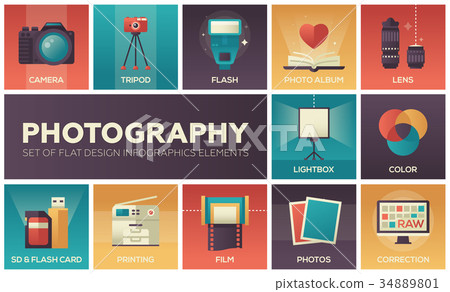What Every Photographer Ought To Know About Illumination
What Every Photographer Ought To Know About Illumination
Blog Article
Article Author-Caldwell Covington
As a digital photographer, you know that lighting can make or damage your photos. Comprehending the nuances of both natural and fabricated light is crucial for catching the mood and quality you go for in your work. Whether https://telegra.ph/Innovative-Ways-To-Market-Your-Digital-Photography-Solutions-01-07-2 going after the excellent gold hour radiance or fine-tuning your man-made configurations, mastering these components can boost your photography significantly. Yet there prevail mistakes that several neglect, and recognizing them can transform your method to every shoot. Allow's explore what you may be missing and exactly how it can affect your outcomes.
Recognizing All-natural Light
Comprehending all-natural light is essential for any type of photographer wanting to boost their work. It's the structure of excellent photography, influencing state of mind, tone, and clarity. When you shoot outdoors, take note of the time of day. The gold hour-- quickly after dawn and before sundown-- uses soft, warm light that can change regular scenes right into magnificent photos.
Don't take too lightly the power of overcast days. Cloud cover diffuses sunshine, creating a soft, also light that's excellent for pictures and macro photography. You'll locate colors pop in this sort of lighting without extreme darkness.
https://writeablog.net/edwardo551jacquetta/just-how-to-locate-your-special-style-as-a-professional-photographer , as well. Constantly consider https://www.popphoto.com/story/how-to/make-money-off-your-photos/ to the source of light. If the sun's behind your topic, you may wind up with a silhouette, which can be significant however mightn't be what you desire. On the other hand, direct sunlight can develop uncomplimentary darkness.
Experiment with angles; occasionally, changing your point of view can produce impressive results. Usage all-natural reflectors, like water or sand, to bounce light onto your topic, adding measurement.
Learning Artificial Light
Grasping synthetic light is crucial for professional photographers who want to take their skills to the following degree. Whether you're using speedlights, workshop strobes, or continual lights, recognizing just how to manipulate these sources can significantly enhance your photos.
Beginning by acquainting on your own with the essentials of light quality, direction, and shade temperature. Explore various modifiers like softboxes, umbrellas, or grids to regulate the gentleness or cruelty of the light.
You'll locate that soft light often creates lovely outcomes, while harsher light can add drama and deepness. Do not shy away from darkness; they can improve the three-dimensionality of your subjects.
Pay attention to the placement of your lights. A light positioned as well near to your topic can produce uncomplimentary results, while as well away can result in a lack of detail. Make use of a light meter or your cam's pie chart to guarantee you're revealing properly.
Lastly, remember that artificial light can be blended with ambient light for imaginative effects. Stabilizing these sources could take method, but once you understand it, your digital photography will genuinely radiate.
Techniques for Different Situations
When you enter various shooting scenarios, adjusting your lights methods is critical for capturing the best images. For outside pictures, use the gold hour-- early morning or late afternoon light-- to soften darkness and enhance complexion.
If it's a rough noontime sun, consider using a reflector to bounce light back onto your topic or look for shaded areas for an extra even exposure.
In low-light situations, like indoor occasions, increase your ISO and use a vast aperture to let in more light. A tripod can aid remove camera shake, permitting longer direct exposures without blurring.
If you're contending night, experiment with off-camera flash to create dynamic lights and deepness in your photos.
For item digital photography, use diffused illumination to prevent extreme reflections. Softboxes or light camping tents can assist achieve this result.
When photographing landscapes, think about the direction of light and time of day, as it can dramatically change the mood of your shot.
Always be just click the next website page to readjust your setups and placing based upon the scenario, as adaptability is crucial to understanding lights in digital photography.
Final thought
In conclusion, grasping lighting is crucial to boosting your digital photography abilities. Embrace natural light's elegance during gold hour, and do not shy away from experimenting with man-made light techniques. By adjusting your method to different circumstances, you'll catch magnificent images that resonate with feeling and quality. Bear in mind, the appropriate lights can change an average shot into something amazing, so keep practicing and fine-tuning your understanding of both all-natural and fabricated light. Satisfied shooting!
